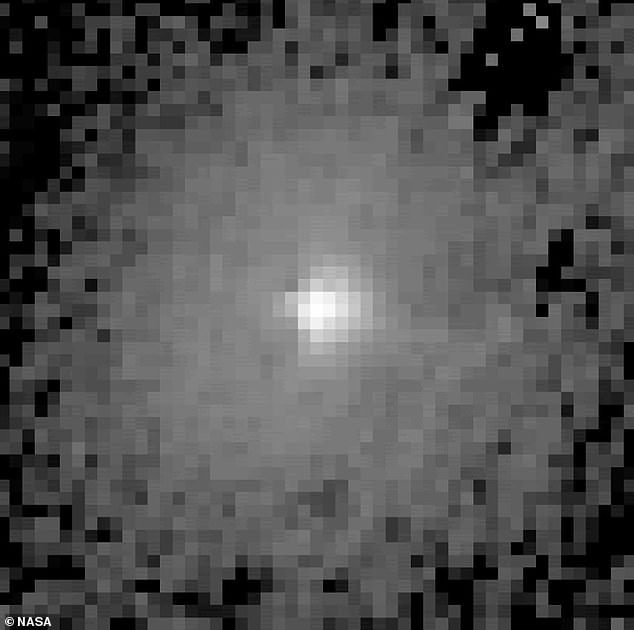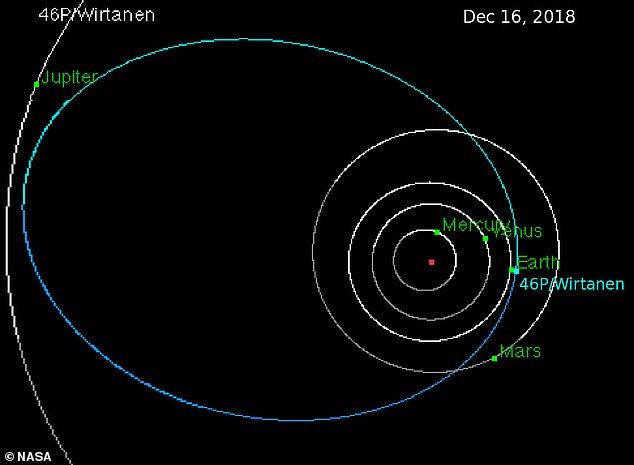
Normal comet activity is driven by sunlight vaporizing the ices near the surface of the nucleus, and the outflowing gases drag dust off the nucleus to form the coma. However, many comets are known to experience occasional spontaneous outbursts that can significantly, but temporarily increase the comet's activity.
It is not currently known what causes these outbursts, but they are related to the conditions on the comet's surface.
A number of potential trigger mechanisms have been proposed, including a thermal event, in which a heat wave penetrates into a pocket of highly volatile ices, causing the ice to rapidly vaporize and produce an explosion of activity, and a mechanical event, where a cliff collapses, exposing fresh ice to direct sunlight.
Studies of the outburst behavior can help scientists understand the physical and thermal properties of a comet.
Comment: What about the 'electrical' nature of a comet? See also: 'Oumuamua reclassified from 'asteroid' to 'comet' (because they're essentially the same thing)
An important note on comets as detailed by Pierre Lescaudron in Earth Changes and The Human cosmic Connection:
Comets or Asteroids
The fundamental difference between asteroids and comets is not their chemical composition, i.e. dirty, fluffy icy comets vs. rocky asteroids. Rather, as has long been put forward by plasma theorists, what differentiates 'comets' from 'asteroids' is their electric activity.
When the electric potential difference between an asteroid and the surrounding plasma is not too high, the asteroid exhibits a dark discharge mode or no discharge at all. But when the potential difference is high enough, the asteroid switches to a glowing discharge mode. At this point the asteroid is a comet. From this perspective, a comet is simply a glowing asteroid and an asteroid is a non-glowing comet. Thus the very same body can, successively, be a comet, then an asteroid, then a comet, etc., depending on variations in the ambient electric field it is subjected to.
"TESS observations of comet 46P/Wirtanen were the first to capture all phases of a natural comet outburst, from beginning to end," said Dr. Tony Farnham, a research scientist in the Department of Astronomy at the University of Maryland.
"Three other previous observations came close to recording the beginning of an outburst event."
"Observations of a 2007 outburst from comet 17P/Holmes began late, missing several hours of the initial brightening phase of the event. In 2017, observations of an outburst from comet 29P/Schwassmann-Wachmann 1 concluded early, due to limitations on pre-scheduled observation time. And, while observations from the Deep Impact mission captured an outburst from comet Tempel 1 in unprecedented detail in 2005, the outburst was not natural — created instead by the mission's impactor module."

The initial brightening of the outburst occurred in two distinct phases, with an hour-long flash followed by a more gradual second stage that continued to grow brighter for another 8 hours. This second stage was likely caused by the gradual spreading of comet dust from the outburst, which causes the dust cloud to reflect more sunlight overall.
After reaching peak brightness, 46P/Wirtanen faded gradually over a period of more than two weeks.
Because TESS takes detailed, composite images every 30 minutes, Dr. Farnham and colleagues were able to view each phase in exquisite detail.
"With 20 days' worth of very frequent images, we were able to assess changes in brightness very easily. That's what TESS was designed for, to perform its primary job as an exoplanet surveyor," Dr. Farnham said.
"We can't predict when comet outbursts will happen. But even if we somehow had the opportunity to schedule these observations, we couldn't have done any better in terms of timing. The outburst happened mere days after the observations started."
According to the researchers, the September 26 outburst ejected about 1,000 tons of material, which could have left a crater on the comet of 65 feet (20 m) across.
TESS also detected for the first time the dust trail of 46P/Wirtanen.
Unlike a comet's tail, the spray of gas and fine dust that follows behind a comet, growing as it approaches the Sun, a trail is a field of larger debris that traces the comet's orbital path as it travels around the Sun.
Unlike a tail, which changes direction as it is blown by the solar wind, the orientation of the trail stays more or less constant over time.
"The trail more closely follows the orbit of the comet, while the tail is offset from it, as it gets pushed around by the Sun's radiation pressure," said Dr. Michael Kelley, from the Department of Astronomy at the University of Maryland.
"What's significant about the trail is that it contains the largest material."
"Tail dust is very fine, a lot like smoke. But trail dust is much larger — more like sand and pebbles. We think comets lose most of their mass through their dust trails. When the Earth runs into a comet's dust trail, we get meteor showers."
The team's paper was published in the Astrophysical Journal Letters.



Come out of the Matrix my people, that ye not partake of her sins or punishments.
This Age of Deception is coming to an end as the current Grand Solar Minimum rapidly progresses.